- Home
- Prelims
- Mains
- Current Affairs
- Study Materials
- Test Series
26th Nov 2021
WHY ASSAM IS RADIO-COLLARING ELEPHANTS AND THE CHALLENGES AHEAD
Recently, to avoid human-elephant conflict Assam Forest department planned to collar at least five elephants in high-conflict habitats.
Cause of human-elephant conflict in India
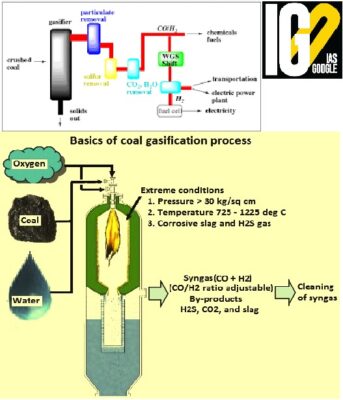
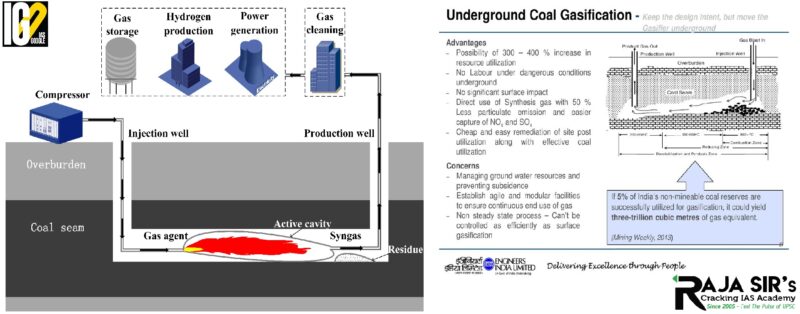
 Better Global competition
Better Global competition
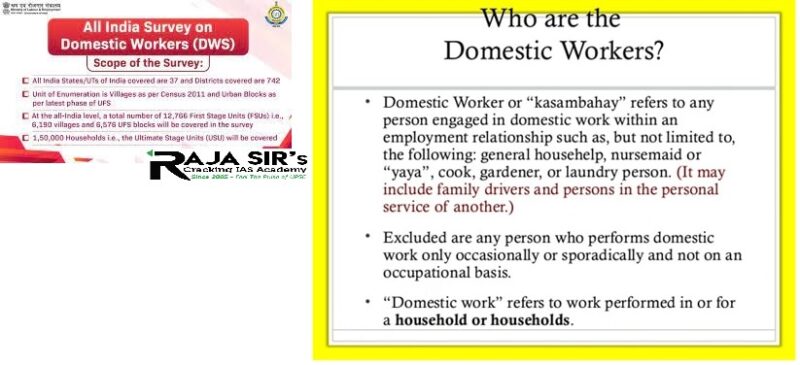

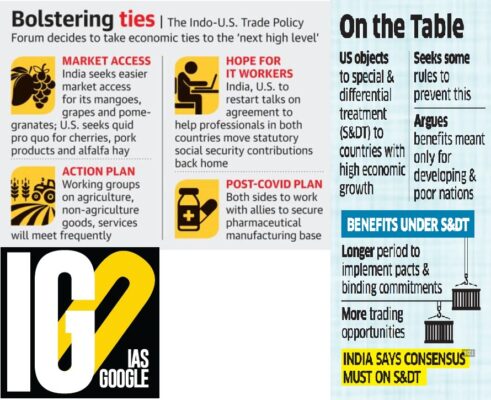
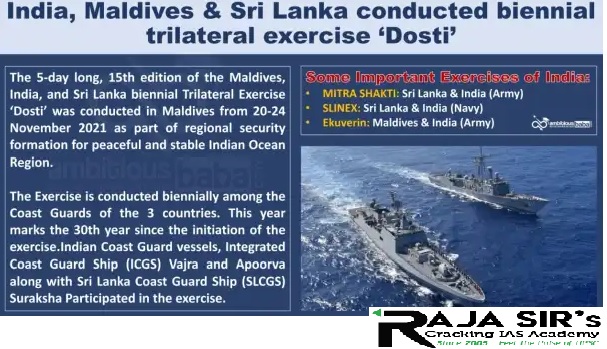


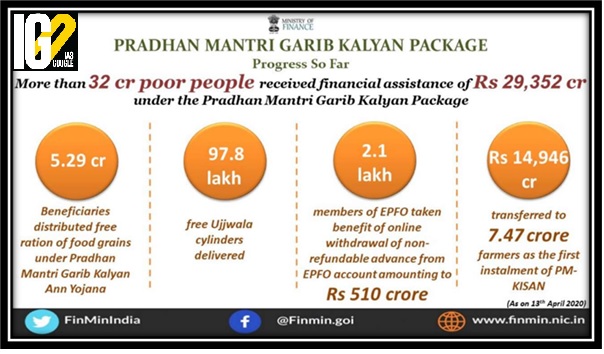

 Gender Equality:
Gender Equality:

- The factor that results in Elephant-human conflict are:
- Habitat loss and fragmentation
- Elephants are being killed by humans for reasons other than ivory and habitat degradation.
- Change in cropping pattern
- Elephants may prefer feeding on crops when compared to wild forage because of their higher nutritive content and palatability.
- Lethal retaliation against elephants
- This was illustrated in the case of >60 elephants found dead in retaliation incidents in North East India.
- Elephants across Asia live in a variety of habitats and landscapes
- Agricultural encroachments and are also found in fragmented landscapes with a mosaic of crop fields, plantations, and patches of forest.
- Protected areas and ecological corridors
- There is need to give emphasis on ecological corridors that allows elephants to move between secure habitats without being disturbed by humans.
- Electric fences and trenches
- Physical exclusion methods such as electric fences and trenches are commonly used to deter elephants from entering farmland and human settlements.
- Acoustic deterrents
- Farmers guard crops and scare away crop-raiding elephants by yelling, setting off firecrackers or carbide cannons, hitting metal objects, and throwing stones.
- Light-based deterrents
- Farmers may light bonfires and use flaming torches or flashlights to guard ripening crops and deter raiding elephants.
- Early detection and warning
- Techniques for early detection and warning of elephants involve using mobile phones for quick communication among farmers, and between farmers and local officials.
- Reduce the conflict interface between elephants and people.
- Restrict and consolidate human settlements and relocate agricultural activity within elephant habitat
- Make agriculture production more efficient
- Change location of fields, move to inedible crops, grow a diversity of crops, change cropping patterns
- Having another farm along the forest boundary as a buffer will be useful where forest are prone to elephant.
- In cases where home ranges of elephants include Reserve Forests, they need to be managed as Elephant Conservation Areas.
- Revenue Forests that include elephant home ranges need to be acquired and managed as Reserve Forests.
- It proposes tax waivers to incentivise coal gasification, leading to eco-friendly usage of the fuel available in the country.
- Rs 20,000 crore will be invested in coal gasification projects by 2030 to utilise 100 million tonnes of coal.
- Coal miners will pay taxes to the Central, state, and local governments and levies including royalties.
- Rs 400/tonne GST compensation cess and contribution to district mineral funds, contribute to more than 50% of the base price of the fuel.


- Coal gasification is the process of converting coal into synthesis gas which is a mixture of hydrogen (H2), carbon monoxide (CO) and carbon dioxide (CO2).
- The syngas can be used in a variety of applications such as the production of electricity and making chemical products such as fertilisers.
- Methanol is more economically competitive than ethanol when it comes to blending with gasoline.
- Blending of 15% methanol in gasoline will bring down greenhouse gas emissions by 20%.
- Domestic production of methanol from coal will help in import substitution and ensure steady supplies at a less volatile price.
- Almost 90% of domestic methanol requirement is met through imports.
- Reduction in emissions intensity of Gross Domestic Product (GDP) by 33 to 35 percent by 2030.
- Achieving about 40 percent cumulative electric power installed capacity from non-fossil fuel-based energy resources by 2030.
- Creating an additional carbon sink of 2.5 to 3 billion tonnes of carbon dioxide through additional trees & forest cover by 2030.
- It is a joint Venture Company comprising of Rastriya Chemicals and Fertilizers, Fertilizer Corporation of India, Gas Authority of India Limited and Coal India Limited.
- It was established in 2016
- Aim: To set up a Surface Coal Gasification based integrated fertilizer using high ash coal with pet coke.
- Coal blended with pet-coke will be gasified to produce syngas up to 25%.
- Coal India Limited is setting up a 1.5 MT coal-based methanol plant in Dankuni.
- Ministry of Coal has decided to set up National Coal Gasification Mission.
- Aim: To fulfill the vision of achieving 100 MT coal gasification by 2030.
- Mapping of gasification potential of coalfields specially in North east
- Development of suitable business model for setting up of various projects
- Marketing strategy for end products
- Policy support with a view to encourage Aatmanirbhar Bharat Scheme
- Coordination with various stake holding Ministries
- Providing quantifiable targets to various companies and monitoring the implementation of activities.
 Better Global competition
Better Global competition
- Larger Bank is capable of facing global competition.
- In the global market, the Indian banks will gain greater recognition and higher rating.
- Merger will result in better Non-Performing Asset (NPA) and Risk management.
- There is a minimization of overall risk is there due to mergers and acquisitions which is always good from the business point of view.
- The merger will reduce the cost of banking operation.
- Multiple posts of Chairman, Managing Director, General Manager and Zonal Managers will be abolished, resulting in substantial financial savings.
- It leads to increase in profitability and helps in raising the standard of living which is absolutely crucial for a growing economy like India.
- With a larger capital base and higher liquidity, the burden on the central government to recapitalize the public sector banks again and again will come down
- It provides better efficiency ratio for business operations as well as banking operations which is beneficial for the economy.
- The objectives of financial inclusion and broadening the geographical reach of banking can be achieved better with the merger of large public sector banks and leveraging on their expertise.
- The merger will help the geographically concentrated regionally present banks to expand their coverage.
- Merger will help in improving the professional standards.
- With the large-scale expertise available in every sphere of banking operation, the scale of inefficiency which is more in case of small banks, will be minimized.
- Larger size of the Bank will help the merged banks to offer more products and services and help in integrated growth of the banking sector.
- A larger bank can manage its short- and long-term liquidity better.
- There will not be any need for overnight borrowings in call money market and from RBI under Liquidity Adjustment Facility (LAF) and Marginal Standing Facility (MSF).
- For the bank, retaining and enhancing its identity as a larger bank becomes easier.
- After the merger, benefits of merger are enormous and the biggest is generation of a brand-new customer base, empowering of business, increased hold in the markets hare, opportunity of technology upgrade.
- Thus overall, it proves to be beneficial to the overall economy.
- The chances of survival of underperforming banks increases hence customer trust remains intact which is vital for the Economy.
- Decisions on high lending requirements can be taken promptly.
- Bank staff will be under single umbrella in regard to their service conditions and wages instead of facing disparities.
- Compliance needed in every decision, which might not be favorable as thinking perspectives and risk-taking abilities of different organizations are different.
- It leads to friction and rift which, if not managed well may lead to the downfall of the organization as a whole.
- Banks are merged only on papers. Their people and culture are difficult to change.
- It can lead to disaster as it leads to poor culture fit not ideal for the organization or the economy.
- Risk of failure increases if the executives are not committed enough in bringing the merger platforms together for the merging and taking over bank.
- Impact of customers on banking merger or acquisition is often quite
- If customer perception is not managed with frequent and careful communication it may lead to loss of business.
- Many banks focus on regional banking requirements.
- With the merger the very purpose of establishing the bank to cater to regional needs is lost.
- Large bank size may create more problems also.
- Large global banks had collapsed during the global financial crisis while smaller ones had survived the crisis due to their strengths and focus on micro aspects.
- With the merger, the weaknesses of the small banks are also transferred to the bigger bank.
- So far small-scale losses and recapitalization could revive the capital base of small banks.
- Now if the giant shaped bank books huge loss or incurs high NPAs as it had been incurring, it will be difficult for the entire banking system to sustain.
- Small Finance Banks is a specific segment of banking created by Reserve Bank of India (RBI) under the guidance of Government of India.
- To further financial inclusion by primarily undertaking basic banking activities.
- Un-served and underserved sections including small business units, small and marginal farmers, micro and small industries and unorganized entities.
- The banks will not be restricted to any region.
- Like other commercial banks, these banks can undertake all basic banking activities including lending and taking deposits.
- These banks can be promoted by individuals, corporate houses, trusts or societies.
- Joint ventures are not
- Foreign shareholding will be allowed in these banks as per the Foreign Direct Investment rules in private banks in India.
- The Small Payment Banks should have capital of at least Rs. 100 crores.
- At net worth of Rs. 500 crores, listing will be mandatory within three years.
- Those Small finance banks having net worth of below Rs.500 crore could also get their shares listed voluntarily.
- Existing Non-banking Financial Companies, NBFCs, Micro Finance Institutions (MFI) and Local Area Banks (LAB) may convert themselves to become small finance banks by making applications to RBI.
- These Small Finance Banks need to be registered as Public Limited Companies under:
- The Companies Act, 2013
- Reserve Bank of India Act, 1934
- Banking Regulation Act, 1949 and other relevant statutes, are applicable to them.
- 75%of its Net Credit should be lent to Priority Sector and 50% of its loans should be in the range of up to Rs. 25 lakhs.

- The Domestic Workers (DW) survey is carried out in 742 districts in 37 states and Union Territories.
- The survey will cover all types of domestic services like cook, driver, housekeeping, tutor (for children), watchman, etc.
- The conducted survey will help the government in policy-making for workers.
- Estimate the number/proportion of DWs at National and State level.
- Household Estimates of Live-in/ Live-out DWs.
- Average number of DWs engaged by different types of households.
- Aim:
- To protect workers against abuse, harassment, violence and guarantee the rights in the matter of social security.
- Benefit holders:
- 50 lakh domestic workers in the country including maids, drivers, etc.
-
- Inclusion of Domestic Workers in the existing legislation.
- Domestic workers will have the right to register as workers. Such registration will facilitate their access to rights & benefits accruing to them as workers.
- Right to form their associations, trade unions.
- Right to have minimum wages, access to social security, protection from abuse, harassment, violence.
- Right to enhance their professional skills.
- Protection of Domestic Workers from abuse and exploitation.
- Domestic Workers to have access to courts, tribunals, etc.
- Establishment of a mechanism for regulation of concerned placement agencies.
- Domestic Workers Sector Skills Council has been established under the Ministry of Skills Development.
- To enable the professionalization of domestic workers and enable their career progression.
- The government conducted Aam Aadmi Bima Yojana and Pradhan Mantri Suraksha Bima Yojana
- To provide life and disability coverage to the unorganized workers
- The central government inducted social security schemes like National Old Age Pension Scheme, Janani Suraksha Yojana.
- To ensure the social security of workers.
- The government enacted the Unorganized Workers’ Social Security Act, 2008
- To provide a formulation of social security schemes and life disability cover.

- It is a persistent body of dense ice that is constantly moving under its weight.
- Formation:
- Due to the accumulation of snow exceeding its ablation over many years, often centuries.
- Types of Glaciers
- Glaciers fall into two groups:
- Alpine glaciers:
- These glaciers form on mountainsides and move downward through valleys.
- Alpine glaciers create or deepen valleys by pushing dirt, soil, and other materials out of their way.
- Eg: Gangotri Glacier, Yamnotri Glacier.
- Ice sheets:
- Ice sheets form broad domes and spread out from their centers in all directions.
- Ice sheets glaciers cover everything around them with a thick blanket of ice, including valleys, plains, and even entire mountains.
- Eg: Antarctica and the Island of Greenland.
- Structure of Glaciers
- A glacier originates at a location called its glacier head and terminates at its glacier foot, snout, or terminus.
- Glaciers are broken into zones based on surface snowpack and melt conditions.
- The ablation zone is the region where there is a net loss in glacier mass.
- The upper part of a glacier, where accumulation exceeds ablation, is called the accumulation zone.
- Source: Pithoragarh district, Uttarakhand
- Mouth: Ghaghra River, Uttar Pradesh, India
- Geographical Location:
- It flows along Nepal's western border with India and has a basin area of 14,871 km2.
- It joins the Ghaghra River, a tributary of the Ganges.
- Economic Importance:
- It offers potential for hydroelectric power generation.
- The river is also proposed as a source for one of the many projects in the Himalayan component of the Indian Rivers Inter-link project.

- The TPF Working Groups on agriculture, non-agriculture goods, services, investment and intellectual property will be re-activated in order to address issues of mutual concern on an ongoing basis.
- India and US agreed to work in relevant multilateral trade bodies including the World Trade Organization, the G20, and the Organisation for Economic Co-operation and Development (OECD).
- The Forum also agreed on the significance of negotiating a Social Security Totalization Agreement in the interest of workers from both sides, and pursuing further engagements for reaching such an agreement.
- The totalisation agreement, being pursued for over a decade, would allow workers from both countries to move their retirement savings.
- The U.S. indicated an interest in supplying ethanol to India for its goal of 20% ethanol blending with petrol by 2025.
- It is a premier forum to resolve trade and investment issues between the two countries.
- The forum has five focus groups:
- Agriculture
- Investment
- Innovation and creativity (intellectual property rights)
- Services
- Tariff and non-tariff barriers.
- To facilitate trade and investment flow between Us and India.
- To develop and implementing trade policies through transparent procedures that comply with international obligations.
- To foster an environment conducive to technological collaboration and innovation.
- To promote inclusive economic growth and job creation in United States and India.
- Under the declaration, the participants states resolved to roll out the Common Minimum Service delivery by Panchayats across the country from April 1, 2022.
- To recognize Citizen Centric Services as the “Heart of Governance”.
- Increase the availability of Citizen Services at the grassroots levels in a timely and efficient manner, commencing with offering of the basic, statutory and/ or essential services at the Gram Panchayat level from 1st April, 2022.
- Implement the highest standards of professional integrity and accountability towards timely delivery of Public Services.

- It is a biennial trilateral exercise between the coast guards of participant countries.
- Aim: To strengthen friendship, enhance mutual operational capabilities, exercise interoperability and build cooperation between the coast guards.
- Participant Countries: India, Sri Lanka and Maldives
- The Indian Coast Guard vessels, ICGS Vajra and ICGS Apoorva, and the Sri Lanka Coast Guard’s SLCGS Suraksha are in the Maldives for the exercise.
- It was started in 1991between the Indian and the Maldives coast guards.
- Sri Lanka joined the exercise for the first time in 2012.
- 2021 marks 30 years since the first edition of the exercise.

- These are the properties that have been left behind by those who migrated and took up citizenship of Pakistan and China.
- Under the Defence of India Rules framed under The Defence of India Act, 1962
- The Government of India took over the properties and companies of those who took Pakistani and Chinese nationality.
- Total Enemy properties marked by Indian Government:
- A total of 12,485 enemy properties were left behind by those who took up Pakistani citizenship.
- 126 enemy properties were left behind by those who took up Chinese citizenship.
- The Enemy Property Act was enacted in 1968.
- Aim: To provide for the continuous vesting of enemy property in the Custodian of Enemy Property for India.
- The Enemy Property (Amendment and Validation) Act, 2017, provided that enemy property shall continue to vest in the Custodian
- If the enemy or enemy subject or enemy firm ceases to be an enemy due to death
- The amendments denied legal heirs any right over enemy property
- The main aim was to negate the effect of a court judgment in this regard.
- States with the highest enemy properties
- The highest number of enemy properties were found in Uttar Pradesh:6,255
- The second highest properties are found in West Bengal: 4,088
- The third highest state isDelhi:658
- The Tashkent Declaration of January 10, 1966, included a clause that says that
- India and Pakistan would discuss the return of the property and assets taken over by either side in connection with the conflict.
- The Government of Pakistan disposed of all enemy properties in their country in the year 1971.
- States with the highest enemy properties

- A draft notification has been issued regarding CRZ and ICRZ amendment.
- To allow exploratory drilling for oil and natural gas in coastal regulation zones (CRZ).
- To include gas-based power plant within the Island Coastal Regulation Zone (ICRZ) area.
- To allow small infrastructure projects,
- The removal of sand bars by traditional communities.
- Aim- to reduce dependence on diesel generator sets.
- The CRZ have been declared by the Ministry of Environment, Forest and Climate change under Section 3 of the Environment Protection Act 1986.
- The land between the Low Tide Line and the High Tide line are called Coastal Regulation Zones (CRZ).
- Coastal Stretches of creeks, bays, seas, rivers and backwaters affected by the tidal actions of up to 500 metres from the High Tide Line comes under the zone.
- Development of buildings, tourism infrastructure in the CRZs is regulated by the Government of India.
- High Tide Line:
- The line on the land up to which the highest water line reaches during the spring tide.
- Low Tide Line:
- The line on the land up to which the lowest water line reaches during the spring tide.
- Spring tides:
- When the sun, the moon and the earth are in a straight line, the height of the tide will be higher.
- They occur twice a month, one on full moon period and another during new moon period.
- To conserve and protect coastal stretches.
- To ensure livelihood security to the fishing & local communities living in the coastal areas.
- To promote development in a sustainable manner.
- To keep a check on natural hazards and rising sea levels.
- CRZ-1:
- These are ecologically sensitive areas.
- It includes national parks/marine parks, sanctuaries, reserve forests, wildlife habitats, mangroves and corals/coral reefs.
- Areas are situated between the high and low tide lines.
- CRZ-2:
- The areas that have already developed till the shoreline.
- Construction of unauthorised structures is prohibited in this zone.
- CRZ-3:
- Rural and urban localities that are relatively undisturbed.
- Specific activities related to agriculture or public facilities are allowed.
- Legally designated urban areas that are not substantially built-up.
- CRZ-4:
- It includes the coastal stretches in Lakshadweep, the Andaman and Nicobar Islands.
- It resides in the aquatic region up to the territorial limits.
- Fishing and other allied services are permitted.
- Releasing solid waste is prohibited.

- Launched by: Department of Food and Public Distribution under the Ministry of Consumer Affairs, Food and Public Distribution in March 2020.
- Aim: To feed the poorest citizens of India by providing grain through the Public Distribution System, to all the priority households.
- Eligibility:
- Families belonging to the Below Poverty Line Antyodaya Anna Yojana (AAY)and Priority Households (PHH) categories will be eligible for the scheme.
- PHH is to be identified by State Governments/Union Territory Administrations as per criteria evolved by them.
- AAY families are to be identified by States/UTs as per the criteria prescribed by the Central Government.
- Households headed by widows or terminally ill persons or disabled persons or persons aged 60 years or more with no assured means of subsistence or societal support.
- Widows or terminally ill persons or disabled persons or persons aged 60 years or more or single women.
- All primitive tribal households.
- All eligible Below Poverty Line families of HIV-positive persons.
- Landless agriculture laborers, marginal farmers, rural artisans/craftsmen.
- Benefits of the Scheme:
- It provides 5 kg of rice or wheat per person.
- 1 kg of dal/Channa to each family holding a ration card per month.
- The scale of this welfare scheme makes it the largest food security program in the world.
- It is a one-year program equipping technically qualified youth with practical knowledge and skills required in their field of work.
- Conducted by: Ministry of Skill Development and Entrepreneurship.
- To increase the engagement of apprentices from the present 2.3 lakh to 50 lakh.
- To give technical qualifications to the youth of the country.
- To promote apprenticeship training.
- There are 126 subject fields for graduate/diploma students for which training is provided.
- The Apprentices are imparted training by the organizations at their place of work.
- During the period of apprenticeship, the apprentices are paid a stipend amount, 50% of which is reimbursable to the employer from the Government of India.
- At the end of the training period, the apprentices are issued a Certificate of Proficiency by the Government of India.
- It can be registered at all employment exchanges across India as valid employment experience.
- The apprentices are placed for training at Central, State, and Private organizations which have excellent training facilities.
- Applicants must be pursuing a higher education degree or diploma in a technological field.
- The minimum age for the apprenticeship is 16 years.
- Applicants should not be a beneficiary of any other skill development program of the government.
- The applicant should not be a self-employed person.
- Also, he/she should not be involved in a business or profession that yields them a taxable income.
- National Apprenticeship Promotion Scheme should not be active in any government service.
- The applicant should not be an existing professional in any field.

- Launched by Cabinet Committee of Economic Affairs with a period of 2017 to 2020.
- Aim: To improve the quality of weather and climate forecast along with strong R&D.
- It focuses on providing climate and weather predictions for the enhancement of society.
- Upgrading the skill of climate and weather estimation via intensive observations and research.
- To improve the efficiency in distribution and transmission approach to provide services like aviation services, climate services, tourism, Agro-meteorological services, etc.
- Indian Institute of Tropical Meteorology
- India Meteorological Department
- Indian National Centre for Ocean Information Service
- National Centre for Medium-Range Weather Forecasting.
- It will offer better weather and climate prediction along with ocean forecasts.
- It will provide a considerable amount of technical and scientific staff with the required managerial support, thus creating employment opportunities.
- A significant number of organizations will be assembled Indian Council of Agricultural Research (ICAR), local municipalities and universities ensuring better connectivity to the services regarding weather.
- Commissioning of Polarimetric Doppler Weather Radars (DWRs)
- Upgradation of Forecast System
- Weather & Climate Services
- Atmospheric Observations Network-1
- Numerical Modelling of Weather and Climate
- Monsoon Mission III
- Monsoon Convection Clouds and Climate Change
- High Performance Computing System (HPCS)
- O-SMART Scheme was launched by the cabinet committee period from 2017-2018 to 2019-2020 with an overall cost of Rs. 1,623 crores.
- Aim: To improve the ocean research and setting up early warning weather systems.
- It addresses ocean development activities such as resources, technology, observations, and science.
- Provides scientific and technological background required for the implementation of various aspects of the Blue Economy.
- Blue economy is related to the exploitation, preservation, and regeneration of the marine environment.
- To update information on Marine Living Resources in Exclusive Economic Zone (EEZ).
- EEZ is an area of coastal water near a country's coastline, to which the country claims exclusive rights for fishing, drilling, and other economic activities.
- To monitor water levels of sea pollutants for health assessment of the coastal waters of India.
- To develop shoreline, change maps for the assessment of coastal erosion.
- To Develop Ocean observation systems for the acquisition of real-time data from seas around India.
- Develop High-resolution models for the ocean forecast and reanalysis systems.
- To develop technologies generating energy and freshwater from oceans.
- Support maintenance and operation of research vessels for ocean monitoring.
- It will provide several economic benefits to the user communities in the coastal areas including the ocean sectors and coastal states.
- The sectors will include fisheries, shipping, and offshore industry.
- The scheme benefits fishermen community who receives information about weather conditions in the coastal waters and the allocation of fish potential.
- This will help in reducing the search time for fishermen, resulted in saving fuel costs.
 Gender Equality:
Gender Equality:
- India now has 1,020 women for every 1000 men.
- Births in institutional facilities, such as a hospital, improved by nearly eight percentage points.
- India hit a total fertility rate (TFR) of 2.0, a decrease from the 2.2 in the NFHS-4.
- The urban TFR is 1.6 and the rural TFR is 2.1.
- According to the United Nations Population Division, a TFR of about 2.1 children per woman is called replacement-level fertility.
- The share of women who had a bank account they themselves use went up from 53% in NFHS-4 to 78.6% in NFHS-5.
- Similarly, health insurance coverage has increased from 28.7% to 41%.
- The share of women aged 20-24 who married before turning 18 has declined from 27% to 23% in the last five years.
- All states, except Manipur, Meghalaya, Assam and Jharkhand, had over 90% population with access to improved drinking water sources.
- Only Uttar Pradesh, Meghalaya, Assam, Jharkhand and Arunachal Pradesh had less than 95% population living in households with access to electricity.
- Death registration
- Pre-school education
- Expanded domains of child immunization
- Components of micro-nutrients to children
- Menstrual hygiene
- Frequency of alcohol and tobacco use, which will give requisite input for strengthening existing programmes and evolving new strategies for policy intervention.
- The National Family Health Survey (NFHS) is a large-scale, multi-round survey conducted in a representative sample of households throughout India.
- First survey was conducted in 1992-93.
- The survey is conducted by Ministry of Health and Family Welfare, Government of India.
- International Institute for Population Sciences (IIPS) Mumbai, is the nodal agency, responsible for providing coordination and technical guidance for the survey.
- The survey provides state and national information for India on fertility, infant and child mortality, the practice of family planning, maternal and child health, reproductive health, nutrition, anemia, utilization and quality of health and family planning services.
- Each successive round of the NFHS has had two specific goals:
- To provide essential data on health and family welfare needed by the Ministry of Health and Family Welfare and other agencies for policy and programme purposes.
- To provide information on important emerging health and family welfare issues.
- Vaccine-derived poliovirus has been reported in three new countries: Guinea-Bissau, Mauritania, and Ukraine.

- Poliomyelitis or Polio is a highly infectious viral disease that largely affects children under 5 years of age.
- The virus is transmitted by person-to-person spread mainly through contaminated water or food.
- A virus called poliovirus causes polio.
- The virus enters the body through the mouth or nose, getting into the digestive and respiratory systems.
- It multiplies in the throat and intestines. It can also attack the nervous system.
- There are three strains of poliovirus: types 1, 2 and 3.
- Types 2 and 3 have been eradicated but type 1 still affects people in a few countries.
- Inactivated polio vaccine (IPV)
- Oral polio vaccine (OPV).
- GPEI is an initiative created in 1988, to eradicate poliomyelitis.
- World Health Organization is the governing body of GPEI.
- WHO is responsible for planning, technical direction, surveillance and eradication of polio.
- The Centre for Disease control and Prevention deploys scientists and public health experts to WHO and UNICEF.
- UNICEF oversees the distribution of the vaccine and helping countries develop communication and awareness strategies.
- Maintaining community immunity through National and Sub National polio rounds each year.
- Environmental surveillance has been established to detect poliovirus transmission in Mumbai, Delhi, Patna, Kolkata Punjab, and Gujarat.
- All States and Union Territories in the country have developed a Rapid Response Team (RRT) to respond to any polio outbreak in the country.
- Emergency Preparedness and Response Plans (EPRP) has been developed by all States in case of detection of a polio case.
- To reduce risk of importation from neighbouring countries, international border vaccination is being provided through continuous vaccination teams (CVT) to all eligible children.
- A rolling emergency stock of OPV is maintained to respond to importation of wild poliovirus (WPV) or emergence of circulating vaccine derived poliovirus (cVDPV).
- India introduced IPV immunization as part of Polio Eradication and Endgame Strategic plan in 2015.
- It would be given along with OPV at 14 weeks of age for children under one year of age.









 Latest News
Latest News
 General Studies
General Studies